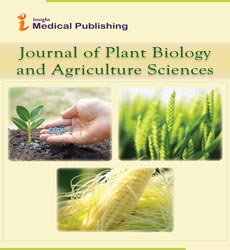Biochemical changes in dry root rot (macrophominaphaseolina) Infected Plants of green gram
Abstract
Green gram (Vigna radiata L.) also known as green gram, is an important pulse crop providing vegetable protein for people throughout the world. It is being suffered by several fungal, bacterial, and viral diseases but dry root rot of mungbean incited by Macrophomina phaseolina (Tassi) Goid. is the most common problem in mungbean growing areas in India. The total sugar, reducing sugar, non-reducing sugar, and soluble protein was higher in healthy roots as compared to diseased roots in all the tested varieties i.e., SML-668, MH-2-15, and IPM-02-03. Maximum reduction in total sugar, reducing sugar, non-reducing sugar, and soluble protein was found in SML-668 followed by MH-2-15, while total phenol content was higher in diseased roots as compared to healthy tissues of all the tested varieties. A maximum increase in total phenol was observed in diseased roots of SML-668 followed by MH-2-15. In conclusion, it is clear from the data that total sugar, reducing, the non-reducing, and soluble protein was higher in healthy roots as compared to diseased roots in all the tested varieties. while total phenol content was higher in diseased roots as compared to healthy tissue.
Open Access Journals
- Aquaculture & Veterinary Science
- Chemistry & Chemical Sciences
- Clinical Sciences
- Engineering
- General Science
- Genetics & Molecular Biology
- Health Care & Nursing
- Immunology & Microbiology
- Materials Science
- Mathematics & Physics
- Medical Sciences
- Neurology & Psychiatry
- Oncology & Cancer Science
- Pharmaceutical Sciences
